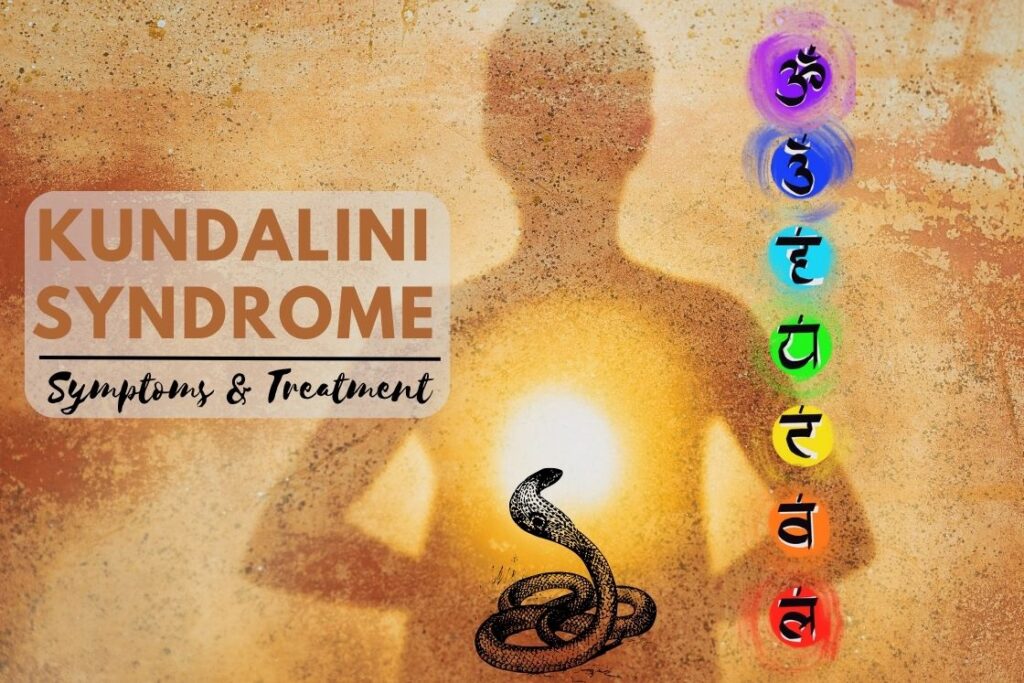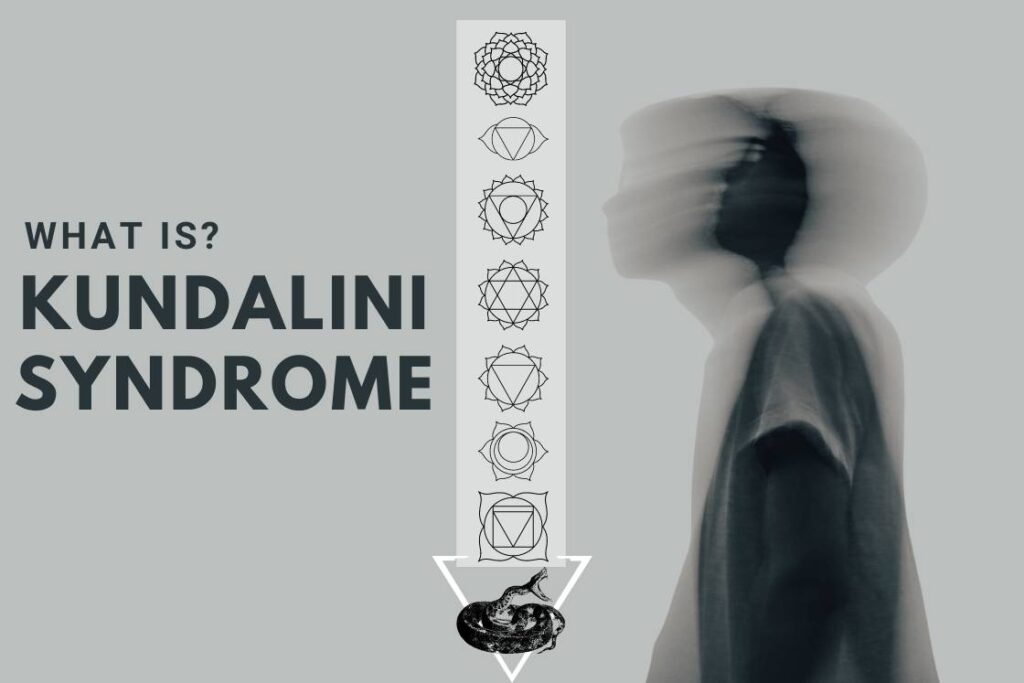
When we talk about spirituality, meditation, and divine energy, Kundalini is a word that often comes up in conversation.
Kundalini is described as a dormant, serpent-like spiritual energy that lies coiled at the base of the spine, known as the Muladhara Chakra. When awakened, this energy rises through the spine, passing through the seven major chakras and ultimately reaching the Sahasrara Chakra at the crown of the head. This journey represents the union of Kundalini Shakti with Shiva the merging of divine energy with pure consciousness.
When Kundalini awakens, it can unlock a hidden power within. This powerful energy allows you to access higher levels of consciousness, deepen your connection with the universe, and see life from an entirely new perspective. It’s often described as a deeply transformative spiritual experience.
However, because of its intensity, Kundalini awakening must be approached with care. Without proper guidance and preparation, it can be overwhelming or even harmful.
In individuals who are not yet ready physically, emotionally, or spiritually; Kundalini may rise suddenly and cause a range of unusual or distressing symptoms. These symptoms are collectively known as Kundalini Syndrome.
In this article, we’ll explore the symptoms of Kundalini Syndrome in detail and look at how it can be understood, managed, and treated safely.
What is Kundalini Syndrome?

Kundalini Syndrome refers to a range of unpleasant or overwhelming experiences that occur when Kundalini energy is awakened suddenly or not handled properly. It is also known as a Kundalini crisis or spiritual emergency.
A person going through Kundalini Syndrome is often unprepared physically, emotionally, or spiritually for the intense energy that arises during awakening. Despite this lack of readiness, their Kundalini has activated.
While Kundalini awakening typically occurs in spiritually advanced individuals, it can sometimes happen to anyone; especially in response to trauma, intense spiritual practice, or emotional shock. When this energy rises abruptly and at a high intensity, the body and mind may struggle to cope with the sudden surge, leading to a variety of disruptive symptoms.
Kundalini Syndrome can result in a wide range of physical, psychological, and even sexual issues that interfere with daily life. For many, the experience is not only confusing but also deeply distressing, traumatic, and chaotic.
But why does Kundalini Syndrome happen?
Kundalini awakening follows a structured process that traditionally unfolds in four stages.
When this process is not respected especially when practiced without the guidance of an experienced teacher the energy can rise too quickly or get stuck in the lower chakras. This imbalance can lead to intense, negative, and sometimes overwhelming experiences.
To awaken Kundalini safely, it is essential to first open and balance the chakras and purify the Sushumna Nadi the central energy channel along the spine through which Kundalini travels.
Practices such as mantra chanting, pranayama (breath control), Kundalini Yoga, meditation, and specific mudras (hand gestures) help prepare the energy body by cleansing and activating these pathways. Only through proper preparation can the energy rise smoothly and lead to a positive transformation.
What causes kundalini syndrome?
Kundalini Syndrome is typically triggered by the sudden, accidental, or improper awakening of Kundalini energy.
This unexpected rise can be caused by intense emotional or physical events—such as the death of a loved one, a serious accident, or shocking news. The emotional shock from such experiences may abruptly activate the energy without any preparation.
Other contributing factors include:
- Overactivation of the lower chakras
- Blocked or suppressed emotions
- Lack of proper spiritual guidance
- Use of recreational drugs or stimulants
- Or simply, an awakening that occurs before the individual is ready
In such cases, the body and mind are often unable to handle the intensity of the awakened energy, leading to the symptoms of Kundalini Syndrome.
What are the symptoms of kundalini syndrome?

The symptoms of Kundalini Syndrome arise from a sudden or premature awakening of Kundalini energy. When this powerful energy is activated without proper preparation, the body and mind may struggle to adjust to the shift leading to a range of physical, emotional, and psychological disturbances.
These symptoms can vary widely in intensity and duration, and are generally grouped into four main categories:
1. Motor symptoms – are those kundalini syndrome symptoms which appear in the physical body and can be noticed by anybody. It includes;
- Muscle spasms and cramps
- Involuntary body movements such as jerks, tremors, shaking
- Unexplaininbale changes in breathing patterns
2. Somatosensory symptoms – are those kundalini syndrome symptoms which you feel physically or mentally through the conscious perception of touch, pressure, pain, temperature, and vibration. It includes;
- A sudden rush of energy or a feeling of electricity pulsating throughout the body or in some part of the body
- Itching, prickling, tinglings on the skin
- Feeling hot and cold extremities
- Overly sensitive sense organs
- Numbness and pain in limbs
- Pressure in the skull, intense headache
3. Audiovisual symptoms – Kundalini syndrome may result in one listen to unexpected sounds. Symptoms include;
- Hearing internal sounds like whistling, chirping, hissing
- Hearing internal voices
- The ringing of the ears
4. Mental symptoms
- Sudden speeding up, slowing down or stopping of thoughts
- Feeling larger than the body
- Detachment from the reality
- Astral, psychic and out-of-body experiences
- Mental fog, chaos, confusion, panic, lack of concentration
- Increased feelings of love, compassion, pleasure, devotion, joy, peace, bliss
- Increased feelings of hatred, depression, fear, anxiety
- Increased sense of creativity, self-expression, and understanding
- Sudden changes in mood, uncontrollable laughing or crying
- Enhanced awareness, memories of past life, healing powers
Some other anecdotal symptoms are:
- Extreme hyperactivity or fatigue
- Changes in eating and sleeping habits
- Digestive problems
It is not necessary that you might experience every symptom mentioned above. While some symptoms may be more profound than others, know that they arise due to sudden and extreme energetic shifts.
How long does kundalini syndrome last?
The duration of Kundalini Syndrome varies from person to person. For some, the symptoms may last only a few days or weeks. For others, the experience can stretch over several months or even years in rare cases.
There is no fixed timeline, as it depends on individual factors such as physical health, emotional readiness, spiritual grounding, and lifestyle.
However, taking the right steps—such as practicing grounding techniques, cleansing the chakras, and avoiding intense spiritual practices—can help reduce the intensity and gradually ease the symptoms over time.
With patience, proper support, and self-care, most individuals eventually return to balance.
Is Kundalini syndrome really dangerous?
The answer isn’t straightforward; it depends on how the awakening occurs.
Kundalini awakening is often described as a powerful and enlightening experience that transforms your perception and deepens your spiritual journey. However, this is usually the case only when the process is approached with proper preparation and guidance.
When Kundalini is awakened under the supervision of an experienced teacher, and the practitioner follows the right steps, the journey can feel smooth and empowering.
But when the awakening is triggered suddenly, or guided solely by self-study and scattered information without the support of a qualified guru there’s a greater risk of developing Kundalini Syndrome.
Many people in such situations report unexpected and intense changes in their emotions, thoughts, physical sensations, and even relationships. In severe cases, individuals may experience depression, hallucinations, or symptoms that resemble serious mental health disorders.
That said, Kundalini Syndrome is not something to fear, but rather something to understand and approach with awareness. Even for those who regularly meditate and maintain inner discipline, the process can be overwhelming if not managed properly.
With the right guidance, patience, and grounding, the symptoms can be navigated safely and the experience can become a gateway to profound transformation.
How to treat kundalini syndrome?
First and foremost, you should stop with any energy-generating exercises and immediately work towards grounding yourself. You do not want to further propel the rise of the kundalini energy to aggravate the kundalini syndrome symptoms.
Grounding yourself will help in gently bringing the uncoiled serpent energy back to its resting place.
Secondly, do not seek out superfluous and hardcore solutions such as alcohol or drugs as these will further deepen the kundalini syndrome symptoms.
Apart from the above, a few more tips you should take into consideration:
- Make changes in your diet by following a vata-pacifying regime
- Avoid eating any form of meat
- Eat full and heavy meals to keep your body settled, nourished, and grounded
- Use chakra-balancing herbs that possess earth energies and qualities
- Focus on staying away from stressful situations and the environment
- Walk barefoot in your garden, hug a tree or spend time in the lap of nature to connect with the earth
- Take salt-water baths
- Start doing physical exercises and stretches to remove excess energy, stress, and anxiety
- Temporarily stop with mantra chanting, especially for chakras
- Break away from any or all spiritual practices for a while
- Avoid stimulants such as coffee and tea
- Make sure you get plenty of restful sleep
- Abstain from sexual activities temporarily
Even after these steps, if you notice that the kundalini syndrome symptoms are not decreasing or are getting worse, you should seek out a professional healer, kundalini teacher, or a guru for individual guidance.
Conclusion
Kundalini awakening is a powerful and transformative experience but it should not be feared. When approached with care, proper guidance, and preparation, it can lead to deep spiritual growth and expanded awareness.
To avoid the challenges of Kundalini Syndrome, it’s essential to follow the right practices, activate and balance your chakras, and cleanse your energy channels beforehand.
Take time to educate yourself, understand the process thoroughly, and, if possible, seek support from a knowledgeable teacher or guide. With the right foundation, your Kundalini journey can unfold safely and beautifully.

